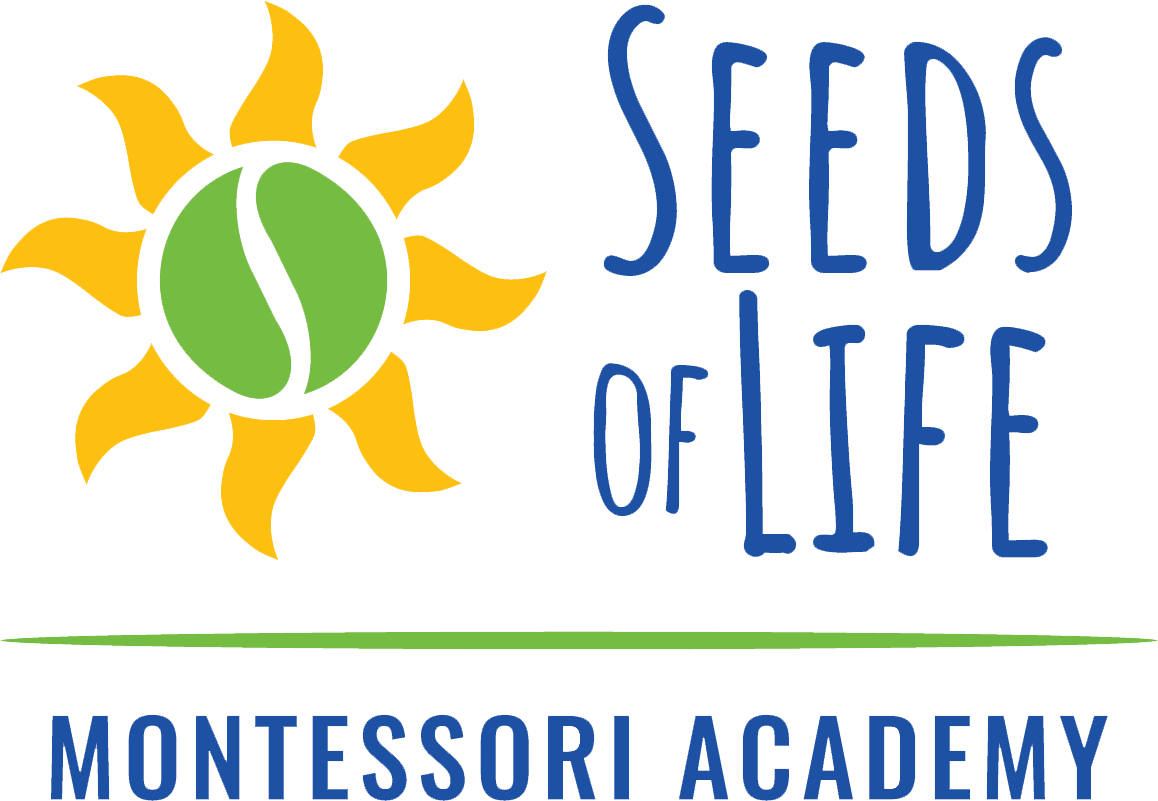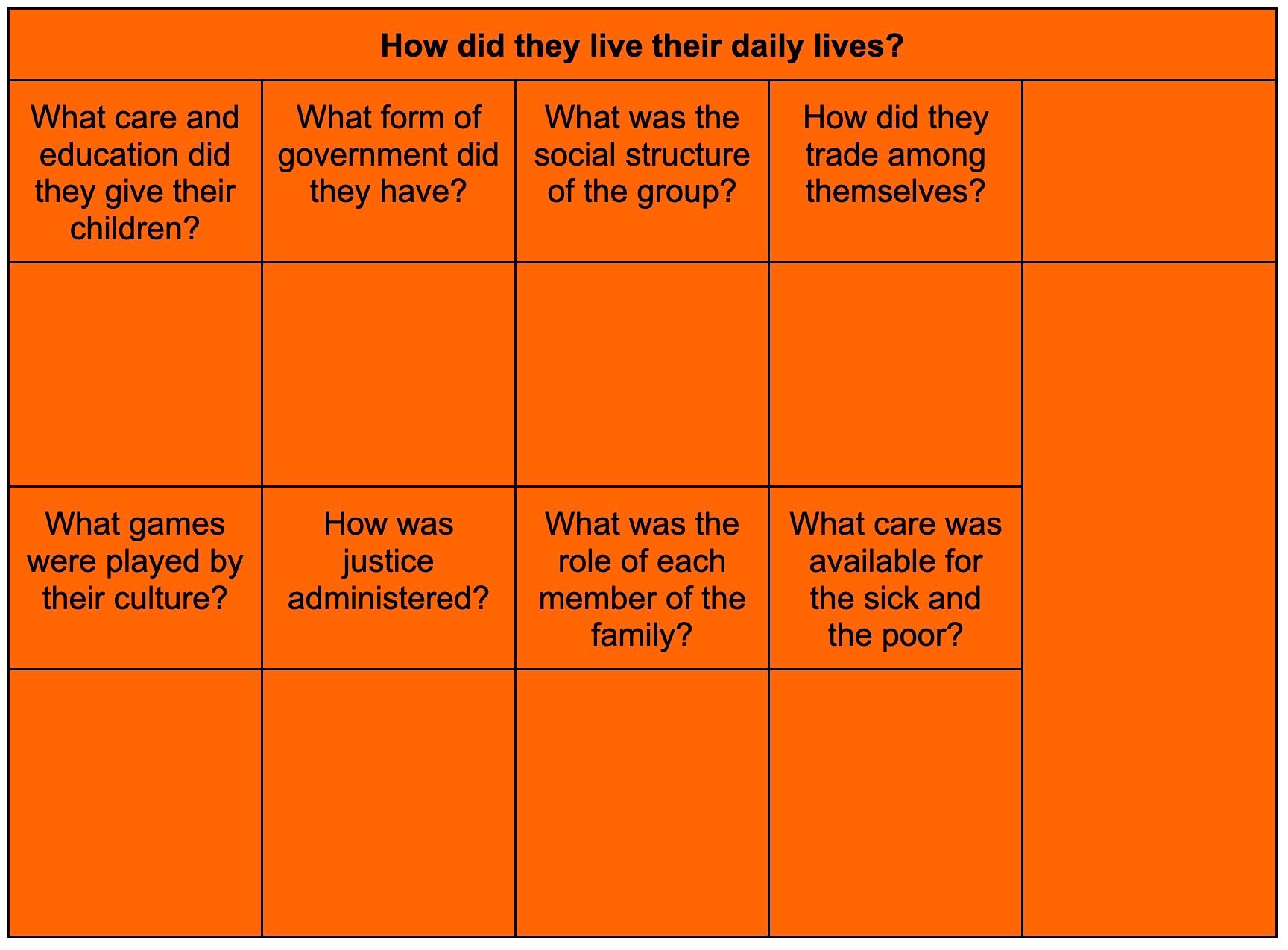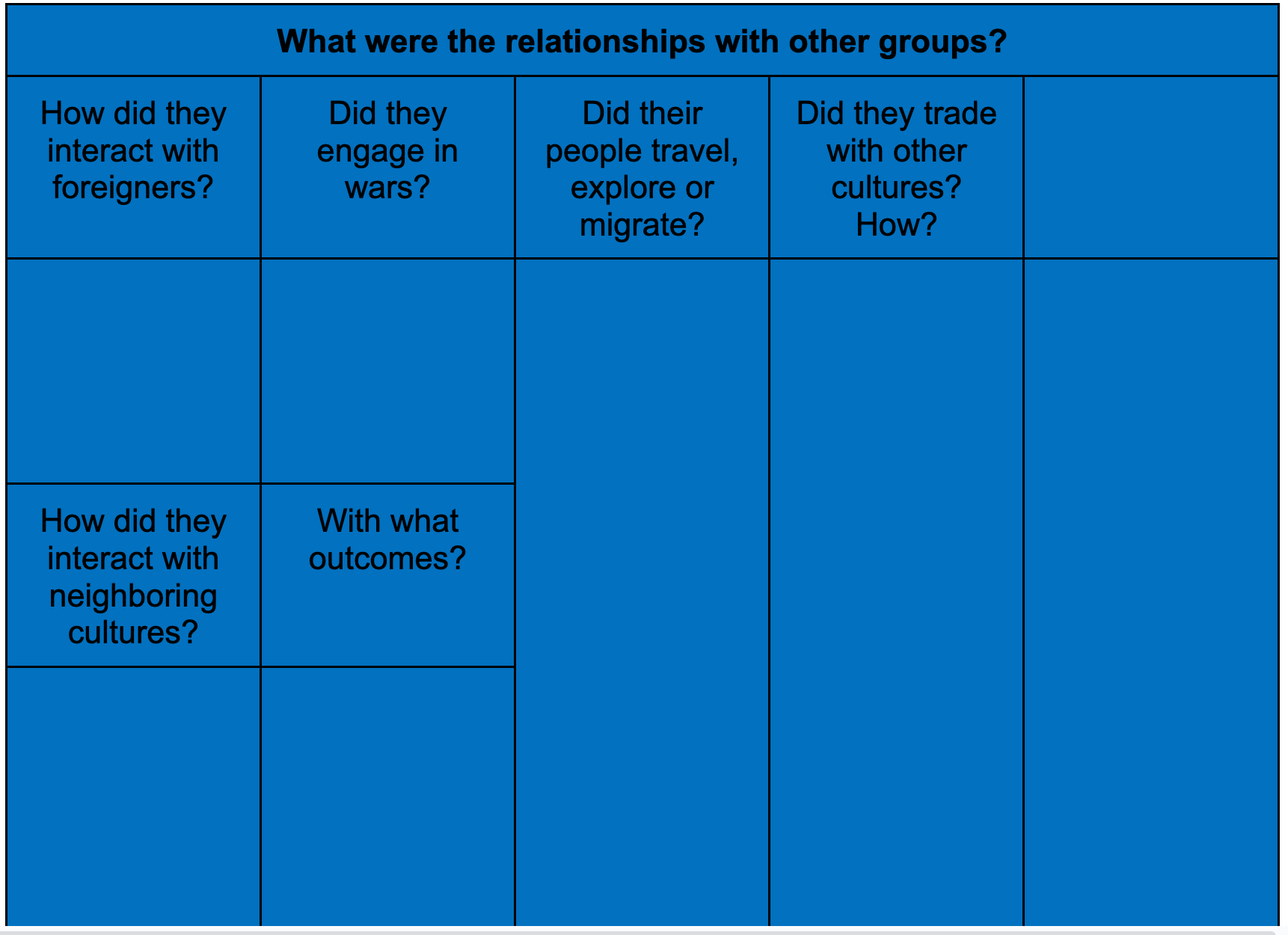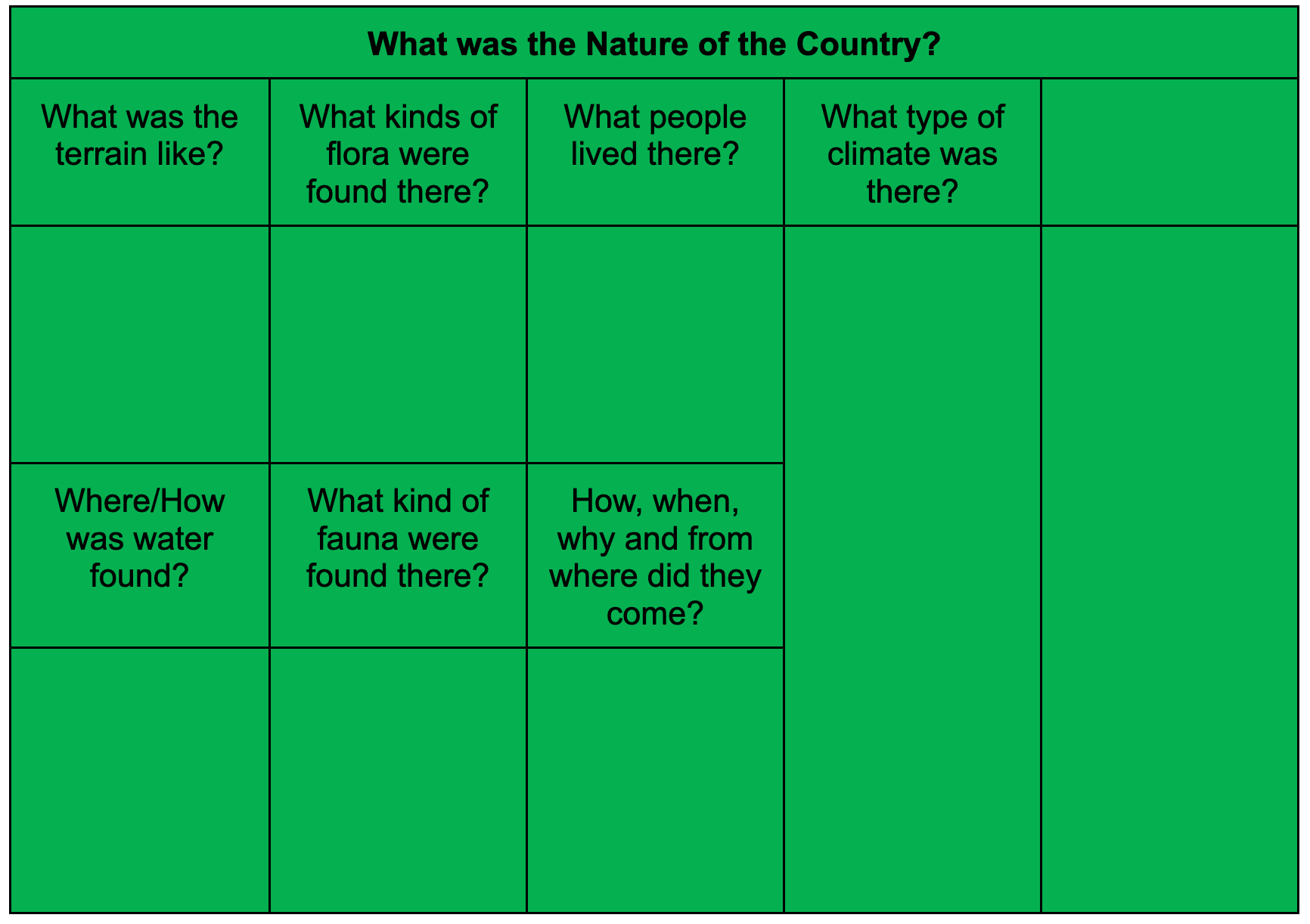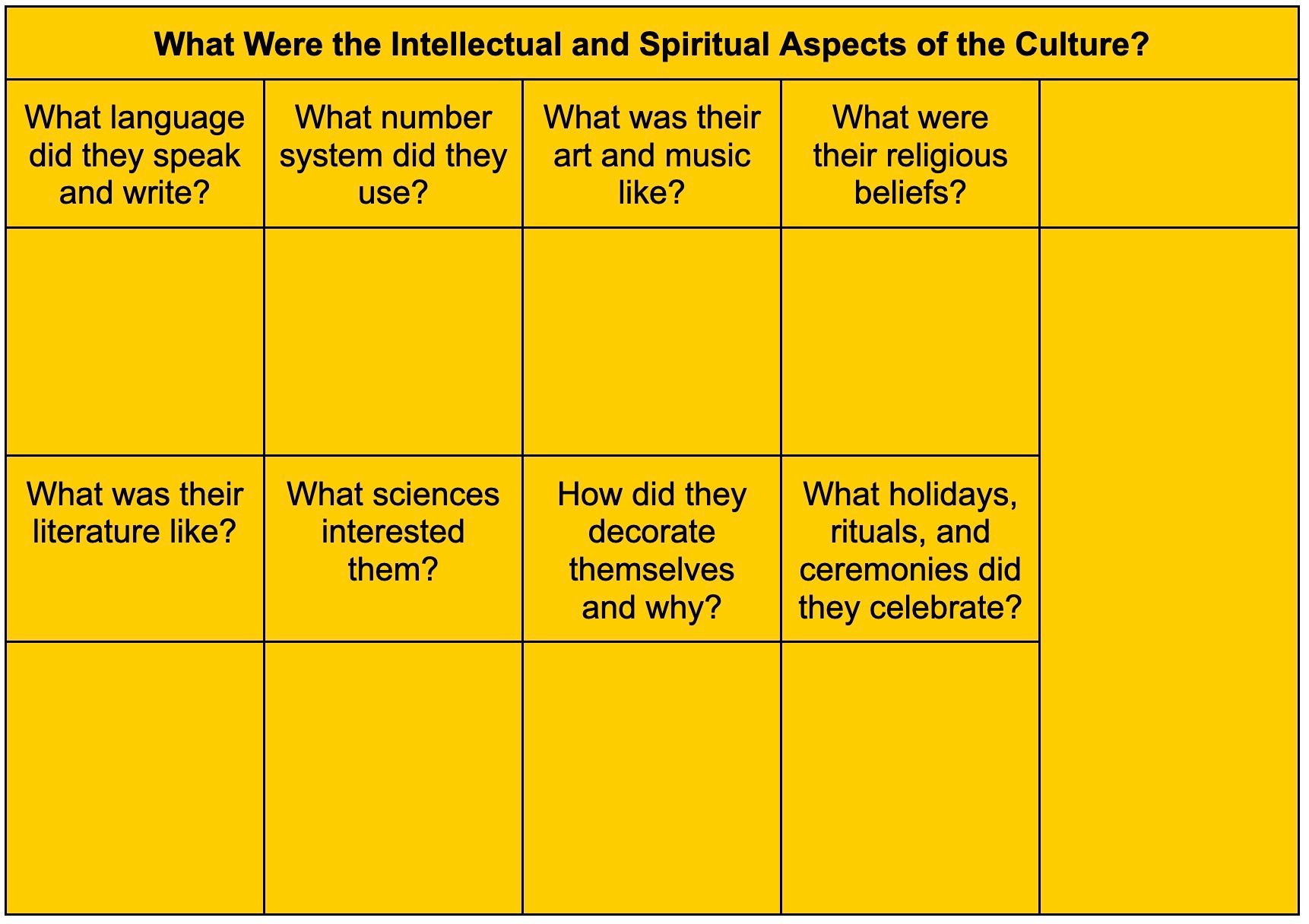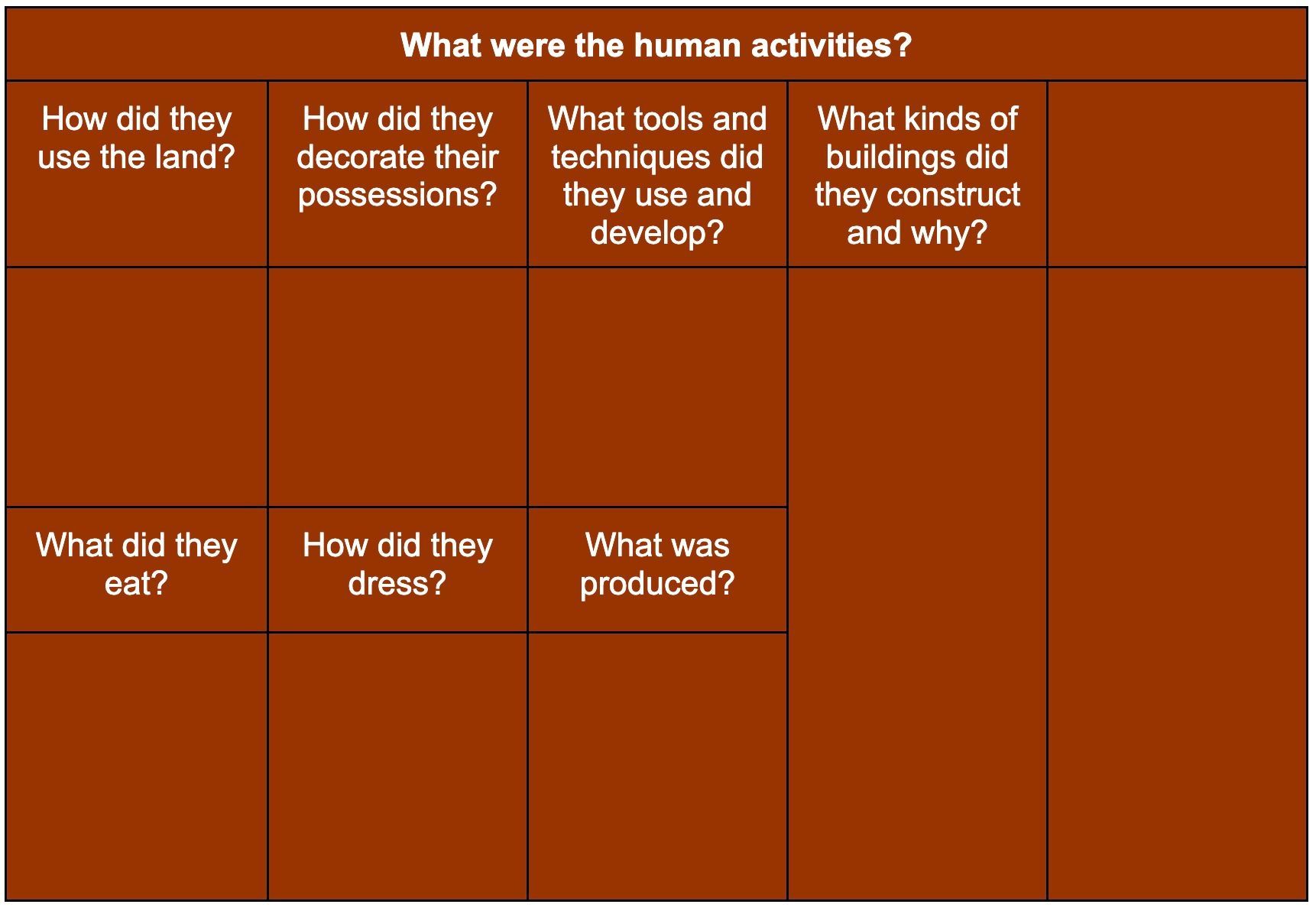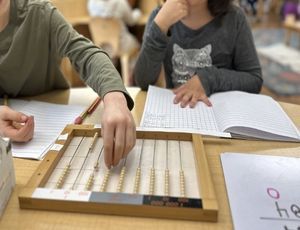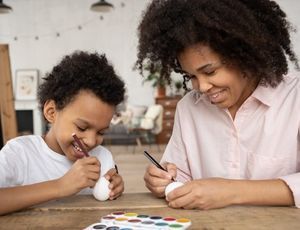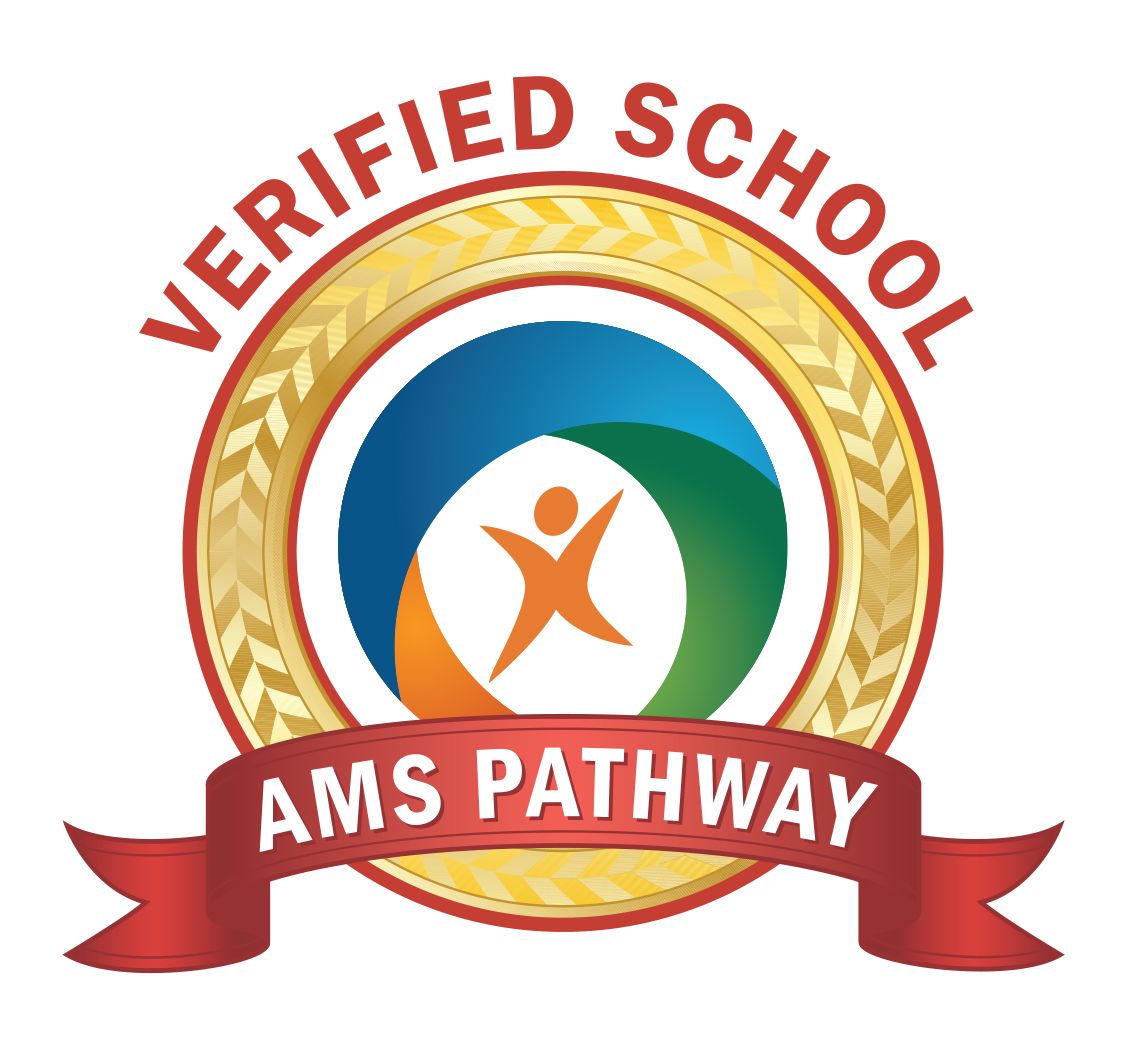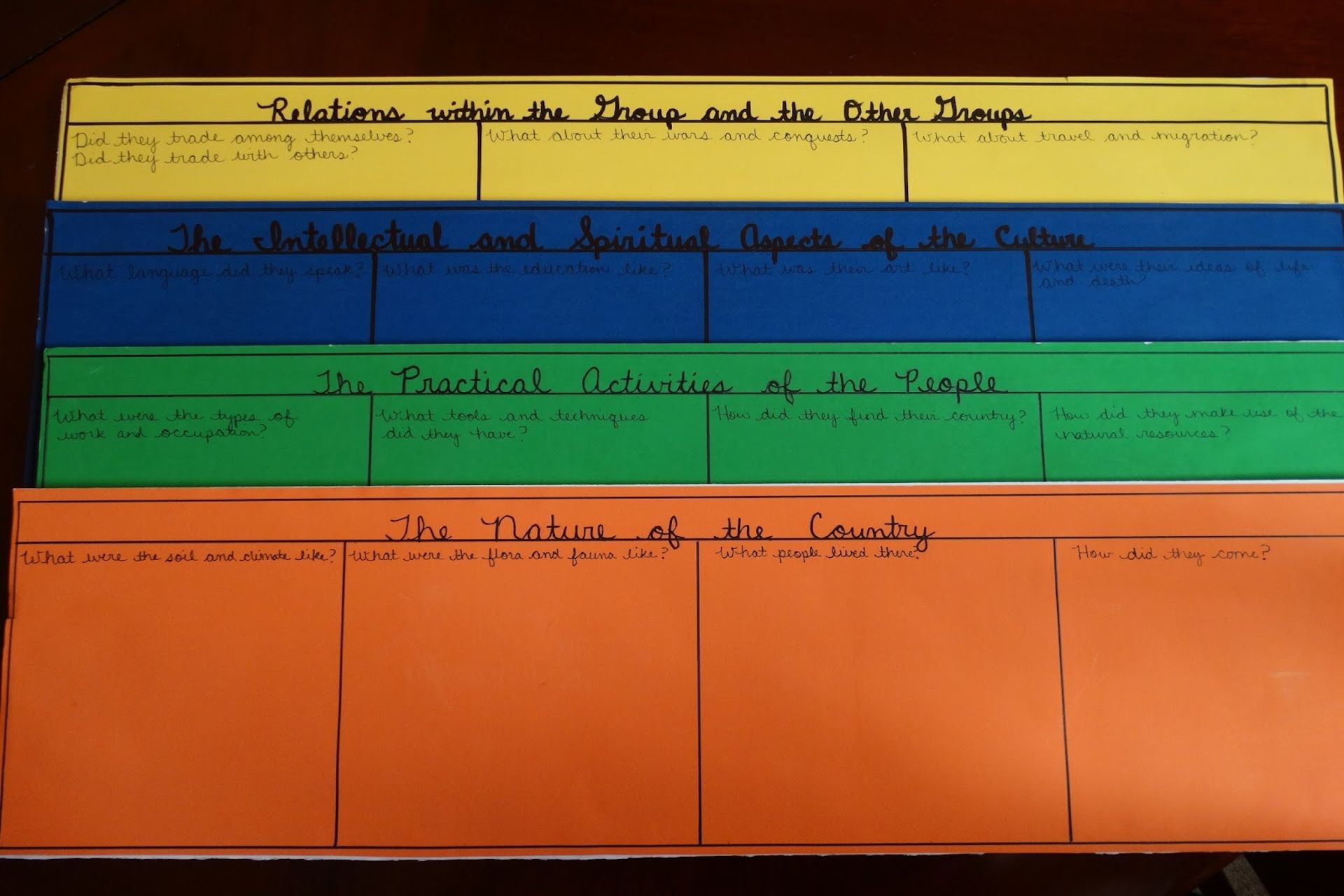
In Montessori elementary classrooms we offer key lessons that unlock doors to exploration and learning. One of these fundamental materials is the History Question Charts. Although they seem relatively simple, the History Question Charts inspire deep thinking about the land and culture of different people, offer children scaffolding for building their research and essay writing skills, and lead to a variety of creative explorations.
Designed in collaboration with Dutch historians Professor Romein-Vershoor and her husband Jan Romein (who were famous for promoting the publication of The Diary of Anne Frank), the History Question Charts serve as a compelling guide for children’s explorations and research into the past.
The History Question Charts
The five color-coded charts each provide a set of questions focused on a broad topic relevant to any civilization. Under each question is space for children to collect their responses. The charts also have additional blank sections for questions children might think of on their own.
The green chart explores overarching themes of the natural world. Children use this chart to explore the terrain, flora, climate, and fauna, how and where water was found, and how, when, why, and from where humans and fauna came to the area.
The brown chart focuses on human activities and encourages children to explore how humans use the land, decorate possessions, dress, and eat. In addition, the chart includes questions about tools and techniques, construction of buildings and for what purpose, and general production.
The gold chart highlights intellectual and spiritual achievements through questions about the people’s language for speaking and writing, the number system, art and music, religious beliefs literature, and sciences. This chart also explores holidays, rituals, and ceremonies, as well as how people decorate themselves and why.
The orange chart is centered on how humans live their daily lives, asking questions about the care and education of children, form(s) of government, social structures of groups, forms of trade, cultural games, the administration of justice, roles of family members, and care of the sick and poor.
The blue chart explores relationships within the group and with other groups, including interactions with “foreigners,” if groups engage in wars, travel, exploration, or migration, and how trade and interactions with others happened and with what outcomes.
Research Skills
There are multiple ways children can use charts to engage in research and learning. They can focus on one or two questions or use a selection of questions drawn from a combination of charts. Sometimes, focusing on one chart can lead to an in-depth investigation of a particular aspect of a culture or place.
The charts are often sized so that children can use index cards to compile their answers to the questions and then place the index cards on the blank spaces below each question. To scaffold this work, we can also provide pre-made color-coded cards with answers to questions about a particular time and place (e.g. Ancient Egypt) so that children can get a sense of the type of information they can glean through researching the questions.
As children become more adept at taking notes from their research, the charts provide a way to organize the information into paragraphs and even multi-paragraph essays about a culture. If children use index cards to take their notes, they can begin to organize the information to provide the structure of a paragraph or essay. Because the charts provide a visual form of organization, they help children experience a more concrete approach to constructing their written work. Often through the experience of using the History Question Charts to compile and organize their research, children discover that composing essays is easier than they may have initially thought!
Follow-Up Explorations
As children use the History Question Charts, their investigations often inspire all sorts of follow-up activities. Sometimes children extend their study of different civilizations or cultures by setting up a trip to a museum, trying out some ethnic cooking, or inviting an expert to the class for a Q&A. Children also love re-creating a culture’s art or representing aspects of what they’ve learned through a craft or display. Sometimes children like to create a series of pictures with written captions that can be assembled into a booklet or presented in the form of a timeline. Those with a more dramatic bent may create short skits or plays to perform for their peers.
Although the initial presentation of the History Question Charts is relatively brief, this material offers the potential for ongoing, in-depth work as children investigate different civilizations. We invite you to schedule a tour to come see how this material leads to a delightful appreciation of history!
